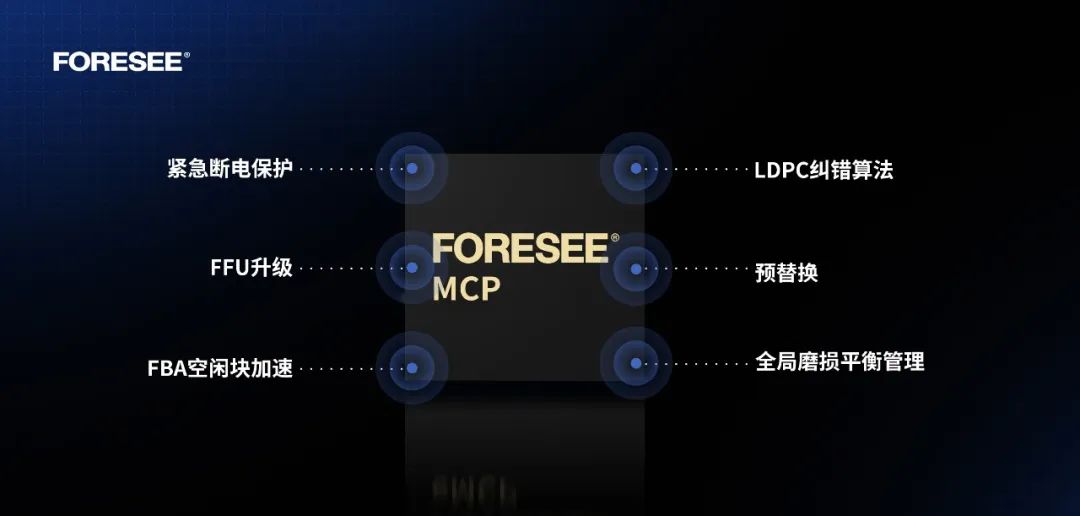

江波龙电子丨商业往事第69话:每一件事都可以有策略
描述
商业往事
每月分享几则有趣的商业小故事(中英双语),邀请大家和我们一起透过历史故事,看存储商业。

每一件事都可以有策略
本文总计2696字
预计阅读9分钟
(英文文章在中文文章之后)
你渴望的任何东西,你几乎都会找到一种方法来得到它。
我们称一次能吃很多食物的人为大胃王。在日本,有一个著名的大胃王叫小林尊。但是如果只是看照片,你不会看出小林尊居然是个大胃王。他的身材有修瘦小,身高只有五呎八吋。但是,他应该是有一个强壮的胃。小时候他总是能够把餐盘清光光,有时甚至连妹妹的盘子也顺便清光。
2000年秋,小林尊在三重县四日市大学念经济学。他和女朋友住在一起。他们两人都来自贫困家庭。他们已经拖欠了房租一阵子了。只能在公寓里点着蜡烛取光,因为他们暂时付不起电费。
小林尊的女友听说有电视上有一场大胃王比赛,比赛的获胜者可以赚到5000美元。小林尊的女朋友知道小林尊在吃的方面颇有天赋,于是她寄了一张明信片帮他报名,却没有告诉他。
小林尊在知道自己要参加比赛后,虽然不大情愿,还是勉强的同意了要参加比赛。小林尊在大学里学到了博弈理论,小林尊要实际应用他所学博弈论。他知道,如果他想赢得比赛,他需要一个获胜的策略。于是他观看了电视转播的大胃王比赛,发现大多数选手在预赛中吃太多,吃太快了。因此,他们的胃在最后几轮再也吃不下。比赛分为四个阶段。小林尊的策略是只要进阶到下一阶段就好了,不需要吃超过必要的。通过这种方式,他可以把胃的空间留给最后阶段的比赛。这个策略与奥克兰运动家队在电影《魔球》中采用的策略相似。这个球队没有追求球员要有最好的打击率,他们只要球员能上垒就好,然后一个一个的打球,把球员送回本垒得分。
赢得比赛后,小林尊继续在日本大胃王比赛赚到钱。然而,他渴望继续成为一名专业的大胃王选手。他把目光投向了每年7月4日在纽约市举行的国际著名的奈森热狗吃大赛。这个特殊的比赛被认为大胃王世界的「超级杯」。这个比赛在科尼岛已经举办了四十多年,还能吸引了超过一百万的观众在ESPN频道观赏。
这个比赛的规则很简单。参赛者在12分钟内尽可能吃更多的热狗和面包(称为HBD)。参赛者可以添加调味品和饮料,以帮助他们吞下更多的热狗面包。各种饮料或调味品都可以,也不受任何数量限制。当最后结束的铃响时,参赛者嘴里的任何热狗或即使只有一部分也可以计算为分数。可是,这些热狗面包在参赛者的嘴里,都必须随后吞下去。如果参赛者把这些热狗面包吐出来,他会被取消资格。这种情况被称为「命运的逆转」。
小林尊决定参加2001年内森的比赛。当时的保有记录是在12分钟内达到25又1/8的热狗面包。
那么小林尊参加这次比赛的总成绩是如何呢?你不会相信的,他吃了 50 个面包热狗,对, 50 个!这几乎是之前记录的两倍,也就是在比赛的12分钟里,每分钟要吃超过4个面包热狗。第二年,小林尊再次赢得比赛,以及之后的四年,他都赢得了冠军。在他赢得比赛的期间,他把记录推高到53个又3/4个面包热狗。过去,从没有一个人可以连续三次赢得冠军,更不用说连续六次了。
刚开始,小林尊的表现受到质疑。一些对手怀疑他作弊了。例如,也许他服用某种肌肉松弛剂或某种物质来抑制反胃。或者传说他还吞下了石头以扩大他的胃部。还有一些人推测,日本医生在小林尊身上多装了了一个食道或胃,来帮助他获胜。
然而,这些谣言大多太过牵强。似乎更合理的是,他真的吃掉这么多这么快。那为什么小林尊的能力为何比其他参赛者高出这么多呢?
小林尊观察到,大多数参赛者都采用了类似的策略,也就是根本没有策略。他们的策略就像是普通人吃热狗的加速版:把热狗的一端塞进嘴里,咀嚼和吞咽,然后重复这个过程,直到热狗被吃掉,他们可能停下来喝一杯把饮料帮助吞咽。但小林尊想知道,应该有更好的方法来消耗热狗,可以帮助他获赢得比赛。经过深思熟虑和练习,他想出了自己的策略,一个真正的策略,用来赢得胜利。
小林尊的策略之一是:重新定义比赛。小林尊把比赛认为是一项严肃的运动,而不是一项游戏。一旦大胃王比赛被定义为运动,那运动就需要身心的紧密训练,这和任何运动都一样,以及一个深思熟虑赢的策略。此外,小林尊的做法与他的竞争对手不同。他的竞争对手会问:「我怎样才能吃更多的热狗?」小林尊则问:「我怎样才能让热狗更容易吃?」
小林尊进行了实验,并收集了数据。他把自己关起来,有条不紊地练习。他花了几个月的时间尝试各种方法,使他的胃能够吃下更多的食物。他记录了所有做法的数据,以便他能够评估这些数据,以提高大胃王的有效性,并克服因暴食而呕吐的冲动。这种集中的练习和分析是乏味的过程。然而,如果一个人想成为这个最好的人,这个过程绝对是必要的。
小林尊做的另一件事是: 拒绝接受极限。他质疑那些参加这种大胃王竞赛的人普遍接受的极限。例如,当他开始训练时,他拒绝接受25个又1/8个面包热狗是人体的极限。他认为,现在的那些记录毫无意义,因为以前的竞争对手可能没有进行过科学训练。他认为大多数参赛者误解了比赛的挑战,他则专注于如何使吞咽更多的面包热狗变得更容易。
「关键是大脑,而不是心脏或肺部」,声誉卓著受人尊敬的脑神经学科学家罗杰‧班尼斯特这么说。
每个人都面临着各种障碍——不管是身体上的、经济上的、时间上的还是你所拥有的一切。有些障碍无疑是重大或真实的。但有些障碍是人类不必要的自我设限。人们常常对给定的系统,或者它能改变多少,常常在没有任何实际证据,或经过分析的情况下就接受了。这种未经验证的期望,会造成了人为的障碍,限制了我们的想象力,阻碍了我们的创造力。我们应该忽略它们。
解决问题本身已经够难了,如果家给了不要的限制,问题会变得更难。只有我们不限制我们的预期,问题才能够得到解决。如果有人怀疑人为限制的负面力量,请想象以下状况:如果你把跑五公里作为你的目标,你可能会发现自己在跑完三公里后会感到很累。然而,如果你把目标定在十公里,你可能跑了五六公里都不会感到疲倦。只有远远超过目标,你才会感到疲倦。
小林尊教给我们的另一件事是,几乎任何能力都可以通过训练来提高,无论天赋能力如何。总的来说,小林尊出色的大胃王表现,并不是他天赋的自然能力。相反,这是透过方法培训和有见地的创新的结果。
这种障碍往往是人为的,小林尊在连续赢了六年之后,被美国大胃王乔伊「嚼」切斯纳超越的事实就证明了这一点。切斯纳后来继续赢得七连胜,超过了小林尊的六连胜纪录。栗子在短短 10 分钟内吃掉了 69 个 面包热狗 (为了安全起见2008 年比赛缩短了 2 分钟)。某些小林尊的竞争者也模仿小林某些作法,他们全都发现,吃下40,50份面包热狗曾被视为不可能做到的事情,但显然不是。
结论:
无论你试图解决什么问题,在你投入时间和精力之前,都应该去了解真正的问题。有些事情可能比想象的简单,而有些事情可能更复杂。通过分析问题,你会获得更好的解决方案,而不需要反复的进行试验。根据分析、定义问题,绝对是解决问题的第一步。如果你能很好地定义问题,你已经在通往有效解决方案的道路已经成功了一半。

Everything has a Winning Strategy
For almost anything that you have a strong desire for, you will find a way to get it.
We call a person who can consume much food at one time a big eater. In Japan, there is a famous big eater called Kobi (His real name is Takeru Kobayashi). But you wouldn’t know that Kobi was a big eater just from his picture. He had a slight build and is only five foot eight. However, he must have a strong stomach. When he was a child, he always cleaned his plate and sometimes cleaned his sisters’ plates too.
In the autumn of 2000, Kobi was a student studying economics at Yokkaichi University. He lived with his girlfriend. Both them came from poor families. They had been behind on their house rent and they lit candles in the apartment since they could not afford to pay the electricity bill for a while.
Kobi’s girlfriend heard that there was a televised eating competition and that the winner of the contest could pocket US$5,000. Knowing the talent for eating that Kobi had, she sent a postcard to sign him up without telling him.
Upon finding out that he had been entered into the contest, Kobi reluctantly agreed to participate. At his university, Kobi had been learning about game theory. He knew that if he wanted to win the game he would need a winning strategy. So he watched the televised eating contest and found that most contestants ate too fast and too much in the early rounds, As such, their stomachs couldn’t take in any more in the last rounds. For the contest, there were four stages. Kobi’s strategy was to get to the next stage without eating more than was necessary. Through this way, he could reserve space in his stomach for the last stage. This strategy is similar to the strategy that the Oakland Athletics used in the movie Moneyball. They didn’t pursue the best batting average for players but rather focused on getting multiple players on base.
After winning, Kobi went on to make more money from Japanese eating contests. However, he desired to go on to become a professional eating contestant. He set his sights on the internationally famous Nathan’s Hot Dog Eating Contest that is held annually on July 4th in New York City. This particular contest is kind of the “Super Bowl” of eating competitions. It has been held for over four decades at Coney Island and attracts more than one million viewers on ESPN.
The rules are very simple for this contest. Contestants try to eat as many hot dogs and buns (called HBD’s) as they can in 12 minutes. Contestants may add condiments and drink beverages to help them swallow the HBD’s. All kinds of beverages or condiments are allowed without any quantity limitation. When the final bell rings, any HBD or portion thereof that is in the contestant’s mouth is added to the contestant’s total count. However, these HBD’s or portions thereof that were in a contestant’s mouth must be subsequently swallowed. If a contestant spits any out, he or she is disqualified. Such a situation is called a “reversal of fortune.”
Kobi decided to attend the 2001 Nathan’s contest. The existing record at that time was 25 and 1/8 HBDs in 12 minutes.
So what was Kobi’s total for this contest? You won’t believe it. He ate 50 HBDs. Fifty! That was almost twice the previous record, and represented more than four HBDs (hot dogs and buns) per minute for 12 straight minutes. The following year, Kobi won the competition again, as well as the next four years after that. During his reign, he pushed the record up to 53¾ HDB’s. In the past, no champion had ever won more than three times in a row, much less six times in a row.
Initially, Kobi’s performance was doubted. Some rivals suspected that he had cheated. For example, perhaps he took some kind of muscle relaxant or some kind of substance to suppress the gag reflex. He was also rumored to have swallowed stones to expand his stomach. A few speculated that Japanese doctors had surgically implanted a second esophagus or stomach in Kobi to help him win.
However, most of these rumors were far-fetched. It seems more plausible that he really consumed so much so quickly than any of those rumor scenarios. Yet why was Kobi’s ability so much higher than that of the other contestants?
Kobi had observed that most of the contestants used a similar strategy, which wasn’t really much of a strategy at all. Their strategy was like a sped-up version of how the typical person eats a hot dog: cram one end of the hot dog into the mouth, chew and swallow, then repeat this process until the hot dog is consumed, possibly pausing to take a drink to wash things down. But Kobi wondered if perhaps there was a better way to consume hot dogs that could help him win. And after thinking about it and practising, he came up with his own strategy, a real strategy, to win.
One secret to Kobi’s strategy was to redefine the contest. Kobi regarded the contest as a serious exercise or sport, instead of as a game. And once the eating contest has been defined as such, it requires intense physical and mental training, just like any sport, as well as a well-thought out strategy. Moreover, Kobi’s approach was different from that of his competitors. Where his competitors asked “How can I eat more hot dogs?” Kobi asked “How can I make hot dogs easier to eat?”
Kobi conducted experiments and collected data. He isolated himself and practiced methodically. He spent several months trying various ways to make his stomach able to contain more food. He recorded the data from all his practices, such that he could evaluate it to improve the effectiveness of his eating technique, as well as conquer the urge to vomit from overeating. Such concentrated practice and analysis are tedious activities. However, they are necessary if one wants to be the best.
Another thing that Kobi did was to question the generally-accepted limitations for those participating in such eating contests. For example, when he began his training, he refused to accept that 25⅛ HDB’s was anywhere near the maximum that was possible. He considered that the existing record was rather meaningless since prior competitors had likely not trained scientifically. He figured that most competitors misunderstood the challenges of the contest. He focused on how he could make it easier to swallow more HBD’s.
“It is the brain, not the heart or lungs, that is the critical organ,” said the esteemed neurologist Roger Bannister who is best known as the first human to run the mile in less than four minutes after redefining the problem and believing that he could set a new record.
Everyone faces barriers—be they physical, financial, temporal or what have you. Some of the barriers are unquestionably significant or real. But other barriers are unnecessarily erected by humans. People often form expectations about how well a given system can function, or how much it can change without any real proof or analysis. Such unsupported expectations create artificial barriers that limit our imagination and obstruct our creativity. We should ignore them.
Solving a problem is hard enough on its own and only gets harder if we unnecessarily limit our expectations for the ways that it could be solved. If one doubts the negative power of artificial limits, consider the following. If you made it your goal to run five kilometers, you’d probably find yourself getting pretty tired after about three kilometers. However, if you set your goal at ten kilometers, you might not get tired until five or six kilometers in, well past the point that you would have gotten tired had your distance goal only been five kilometers.
Another thing that Kobi teaches us is that almost any performance can be improved with training, regardless of natural ability. By and large, Kobi’s outstanding eating performance was not the result of natural ability. Rather, it was the result of methodological training and insightful innovation.
That barriers are often artificial is evidenced by the fact that Kobi was overtaken by the American eater Joey “Jaws” Chestnut after six years of dominance by Kobi. And Chestnut went on to win seven straight contests, surpassing Kobi’s record of six. Chestnut chucked down 69 HDB’s in just 10 minutes (the contest had been shortened by two minutes in 2008, likey for safety.) Some of Kobayashi’s rivals have copied certain strategies of his. All of them gained from the knowledge that 40 or 50 HDB, once considered a fantasy, plainly isn’t.
Conclusion:
No matter what problem you are trying to solve, you should spend your time and effort to really understand the problem before you put in the effort. Some things may be simpler than they at first appear, and other things may be more complicated. And by analysing the problem, you’ll get to a better solution without so much trial and error. Defining the problem based on analysis is absolutely the first step for solving problems. If you can define the problem well, you are already halfway down the road towards an effective solution.
- 相关推荐
- 热点推荐
- 嵌入式存储
-
为什么做一件事或者学习FPGA每隔一段时间就会感觉遇到瓶颈呢?2024-07-30 8837
-
[原创]每天做好一件事2010-05-31 412
-
电子元器件平价商城 有奖调查!2012-03-13 29544
-
什么叫做“每天6件事”,如何落实“每天6件事”2012-04-21 6985
-
电子发烧友网新版首页体验调查2012-05-15 13176
-
学习C2000,大学里最值得干的一件事2015-09-25 5526
-
干货-背钻工艺,超高速信号电路板必须要做的一件事!2018-01-12 3135
-
小米神话被华为OV联手打败,只因为雷军常做这三件事2017-02-06 1723
-
机器人入主政治,Nigel都可以帮你投票啦2017-09-28 1400
-
马云从企业家到师者的决然转身,教会给了人们的第一件事2018-09-13 2826
-
希捷就只做了一件事儿,对此,你怎么看?2018-10-21 828
-
商业往事丨第88话:延长职业生涯的刺猬策略2023-06-09 794
-
商业往事丨第71话:谷歌最好的收购案2022-08-25 3191
全部0条评论

快来发表一下你的评论吧 !

